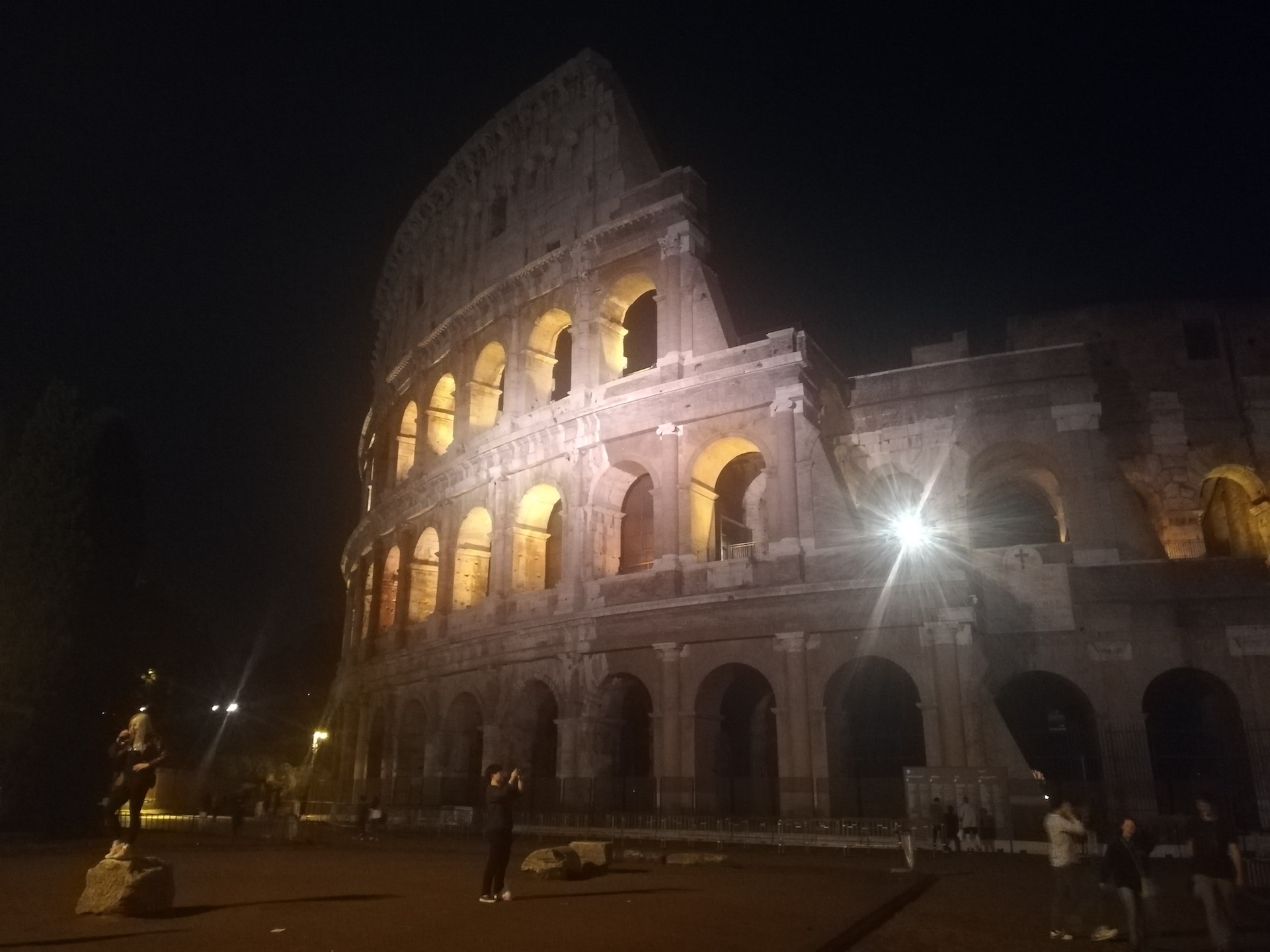Flight cost: £47.30 return
Accommodation cost: San Marino: €20 (£18 or so). Rome: €67.32 (£60 or so).
Food: £101.78.
Everything else: Car hire was £29.80. Car was a Fiat 500L hired for two days from Hertz at Rome Ciampino. Fuel was £61.56.
Total: £318.44.
I’d hired a car as I particularly wanted to visit San Marino. Whilst it’s easy to get to from Rimini, it’s not so easy from Rome. The drive itself takes around 4.5 hours and passes through areas which have some spectacular views. I chose to go up the east coast of Italy. Even during the late autumn, the views were spectacular. I admit to stopping quite a bit just to take it all in. I’m a sucker for the Italian landscape.
San Marino
I arrived into San Marino after dark and quickly found where I was staying. San Marino, as you’d expect with somewhere so small is relatively easy to navigate. Walking outside of the city of San Marino, though, isn’t particularly recommended – there’s many areas with no pedestrian paths.
Once settled in, I attended to the next most urgent thing – food. Reviews suggested that the Ristorante Parco Verde would be a good call for food. It’s located a good distance away from the city, but is worth the short journey. I’m a great believer in the adage of looking food restaurants that locals frequent and this definitely ticked the box. A simple pizza and a couple of drinks was well under £10. I’m a huge, huge fan of mediterranean food. I’m very careful not to call this Italian food – it’s very much not. Sammarinese people are typically extremely proud of their heritage and should not be confused with Italians.
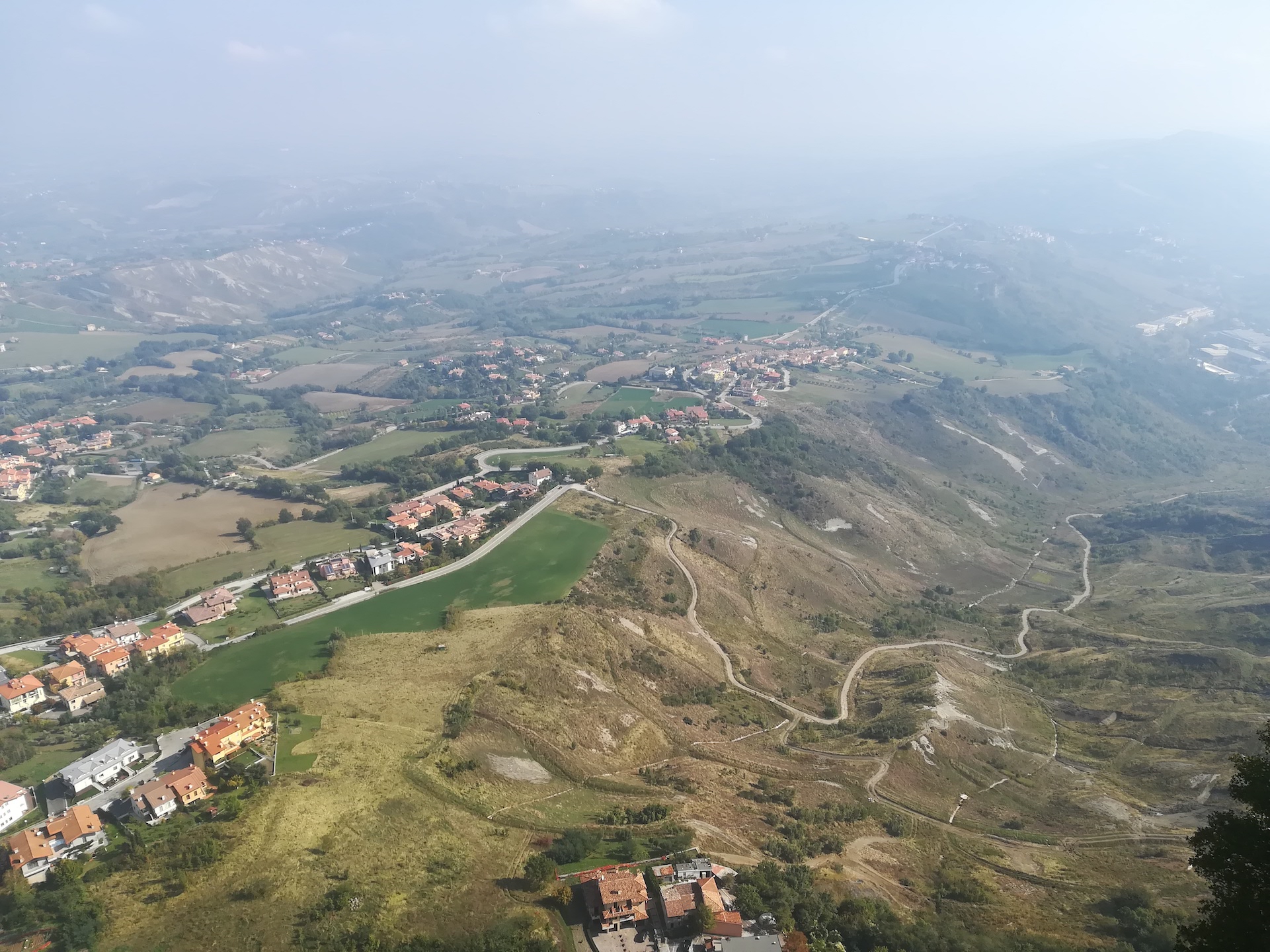
The following day I explored the city of San Marino proper. The views over the small micronation and into Italy itself are something to behold. Quite breathtaking. Most of the city can be seen within an hour or so, but some time should certainly be spent in exploring the defensive towers which are steeped in history. Originally used as part of the fortifications of the town, now they house exhibits which date back to the earliest settlements in San Marino.
There are three towers – however, only two are accessible. The third remains somewhat an enigma in that there is no obvious way in. There’s a school of thought that it may have been sealed in the past – some exploration has taken place which reveals that it has been used as a tower previously, although it’s not obvious how this was done. A ticket can be purchased which allows access for the entirety of the day to the remaining two accessible towers. You can also upgrade this to access the Parliament and other museums too for a modest amount. A ticket for the towers only is €4.50.
I had lunch in at a small restaurant before exploring the rest of the city. It’s worth noting that the level of duty imposed on alcohol, cigarettes and so on is not dissimilar to that of Eastern Europe. Whilst none of those things interest me, it is always something I look out for as it is something I find interesting.
It’s worth dropping by the tourist information centre where you can have your passport stamped with a legitimate San Marino passport stamp for €5. Given the number of people that elect to visit San Marino is relatively small, it’s a somewhat unique memento.
Rome
I headed back down through Italy towards Rome, arriving there to hit rush hour. This is probably best described as an interesting experience and certainly not for the feint of heart. After dropping the car back at the hire office, I headed into Rome. I elected to catch a shuttle bus, which costs ¢5 return. Make sure you’ve got cash for this if you’re buying in person! The shuttle drops you off at Termini station, one of the central points of Rome itself. I’d booked into the Rome Hello hostel, which is a very short walk – less than five minutes – away. Located on a quiet side street, you’re within a couple of minutes of a good sized supermarket, a couple of minutes from the metro and also, as already noted, within spitting distance of Termini.
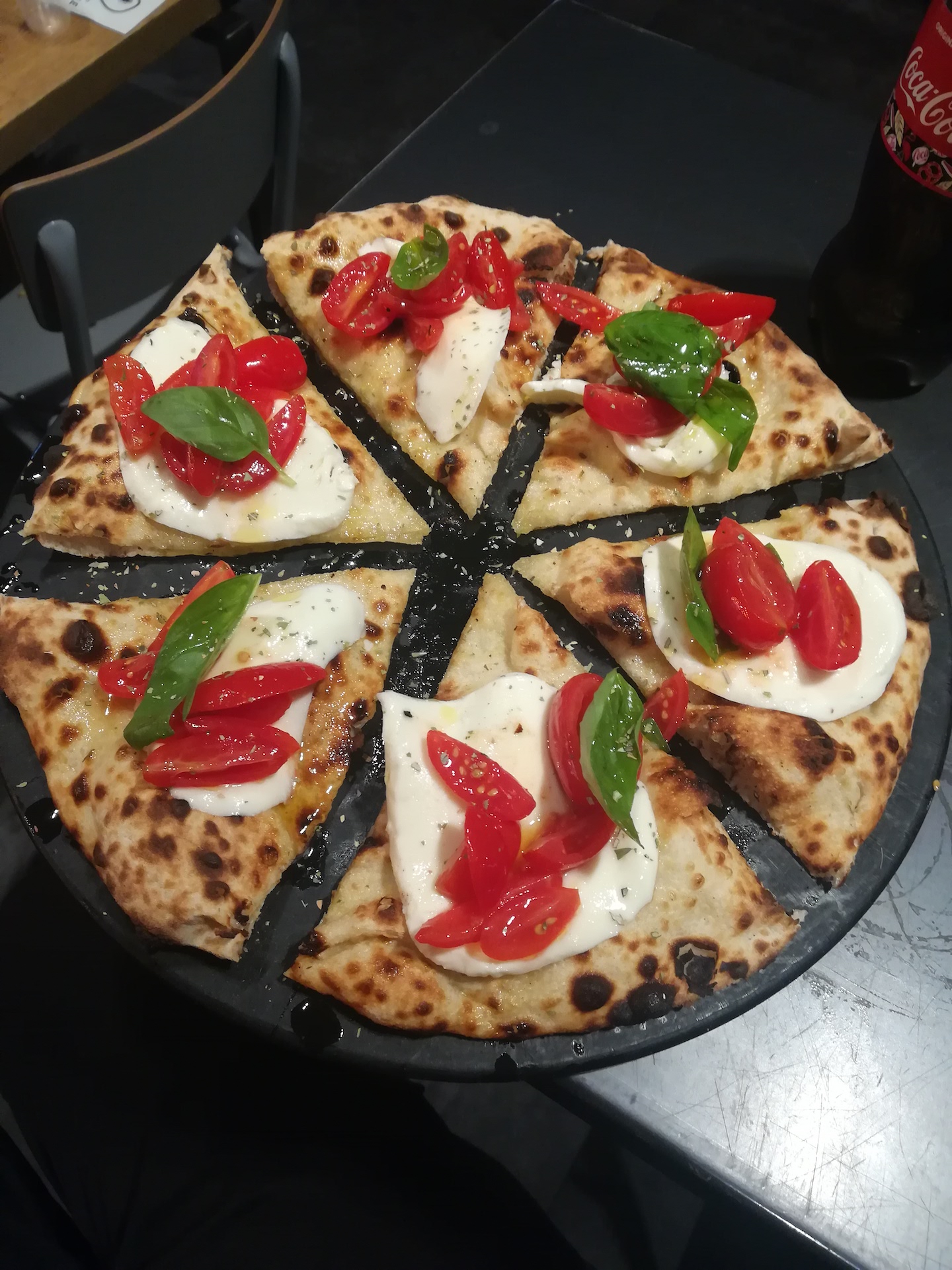
I always like to ask for recommendations from locals as to the best places to eat, what’s worth visiting and similar. The hostel staff recommended Mercanto Centrale, which is located within Termini station itself as one of the better places for food. They were definitely not wrong. With so many different styles and varieties of food meeting in the same place, I was blown away at the choice available. I love Italian food, the mediterranean way of cooking. There’s so many different choices of meats, fish, wine, cakes, pastas, fruit, vegetables… if you’re into your food, it’s got to be one of the places to visit.
Prices are very reasonable too, meaning that you can eat for well under €15 per person with drinks, although if you’re going for some of the more interesting and bigger dishes, expect to pay a little more. Everything is made in front of you. The atmosphere is something to behold, and one of the other reasons I love Italian food. It’s so social. So relaxed. It’s easy to just watch people here.
I had a quick wander round the area surrounding Termini afterwards. This is an area that does have somewhat of a bad reputation. It’s a little bit sketchy at times, but didn’t feel unsafe as such. There’s lots of cheaper places to eat here, as well as smaller shops selling printed t-shirts and similar. The area is incredibly lively, though. There’s a lot of cheaper hotels here too. It’s clear that the area is being improved but it’s also easy to see why people don’t necessarily feel that comfortable here. It does feel slightly imposing.
I headed back to the hostel soon after this. I’d already planned that the next day would be pretty hard going. The RomeHello Hostel has some great areas to relax – a covered outdoor area as well as a lounge area with plenty of comfy sofas to wind down.
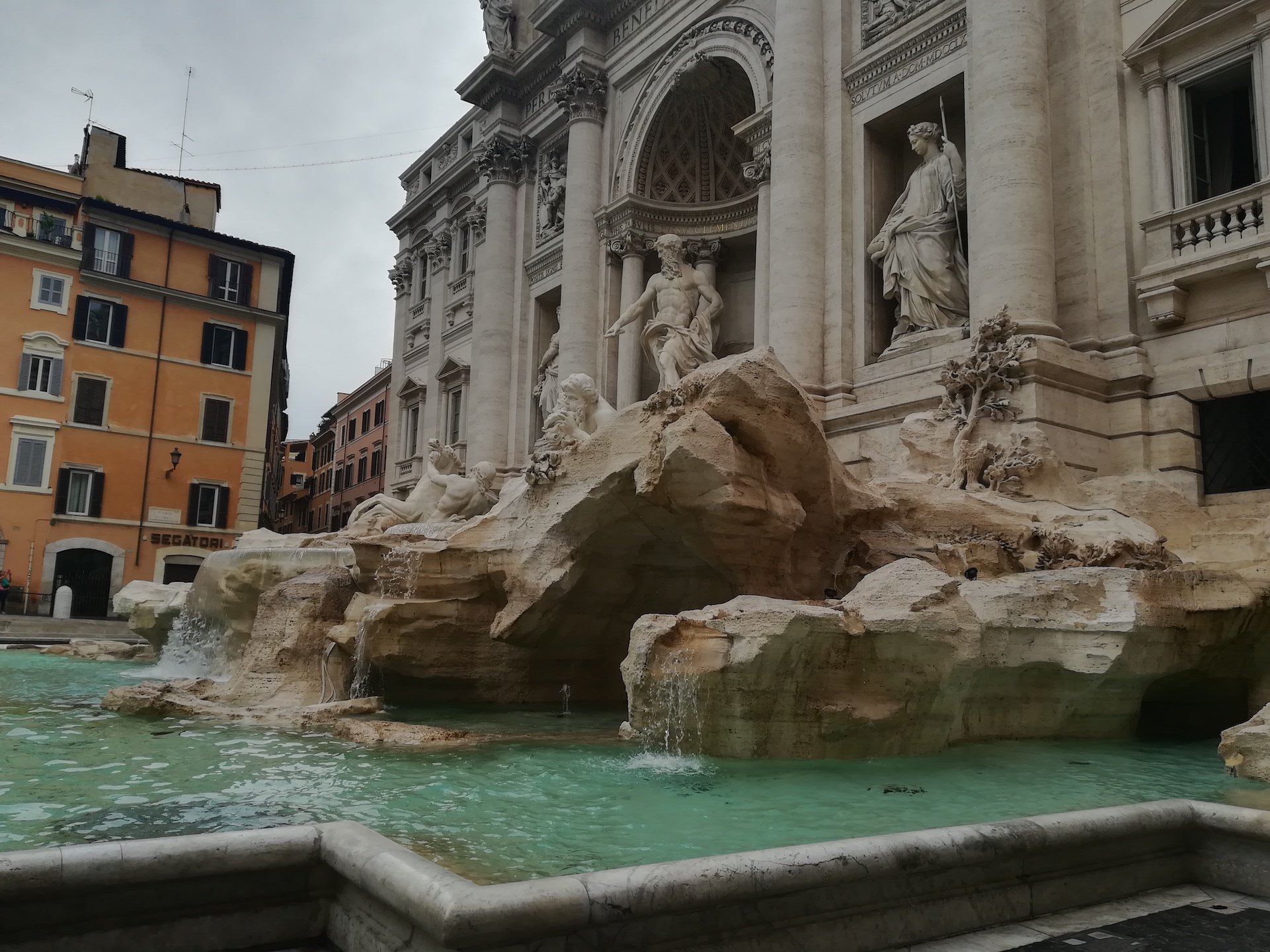
I started out early the following morning, with the idea being to get in as many of the tourist sights as possible. With Rome being one of the more popular western European tourist cities, this necessitated setting out before the crowds. I use Google Maps to plan out a route first – plot all of the places I want to hit, then make a rough route that’ll take me through all of them. I plan the route on the laptop then send it to the phone so that I can be sure I’ve not missed anything. First up was the Trefi Fountain. I arrived at around 0845 and there was a small number of people here, which meant that I was able to take it in and experience it over breakfast, which I’d picked up from a nearby bakery. The sheer size and scale of the fountain is amazing. Within the last few years, a considerable sum of money has been spent on refurbishing it. It’s one of the most popular places for tourists to visit – it’s even been mooted that there be a ‘no-stopping’ rule deployed to aid the flow of people, as reported a couple of years ago. Even by 0915 it was starting to get noticeably busier. Whilst I was there in the winter I’d imagine it would be absolutely heaving with people pretty early in the day, so I can see why locals may be concerned about the sheer weight of people stopping there. The area that the fountain is in lends itself well to creating a bottleneck, so it’s perhaps recommended to get there early as possible.
It really isn’t necessary to use public transport for the central areas of Rome – you can cover them all by walking assuming you have a reasonable level of fitness. Even if you don’t, there’s plenty of places – benches, cafes and similar to stop and take a breath.
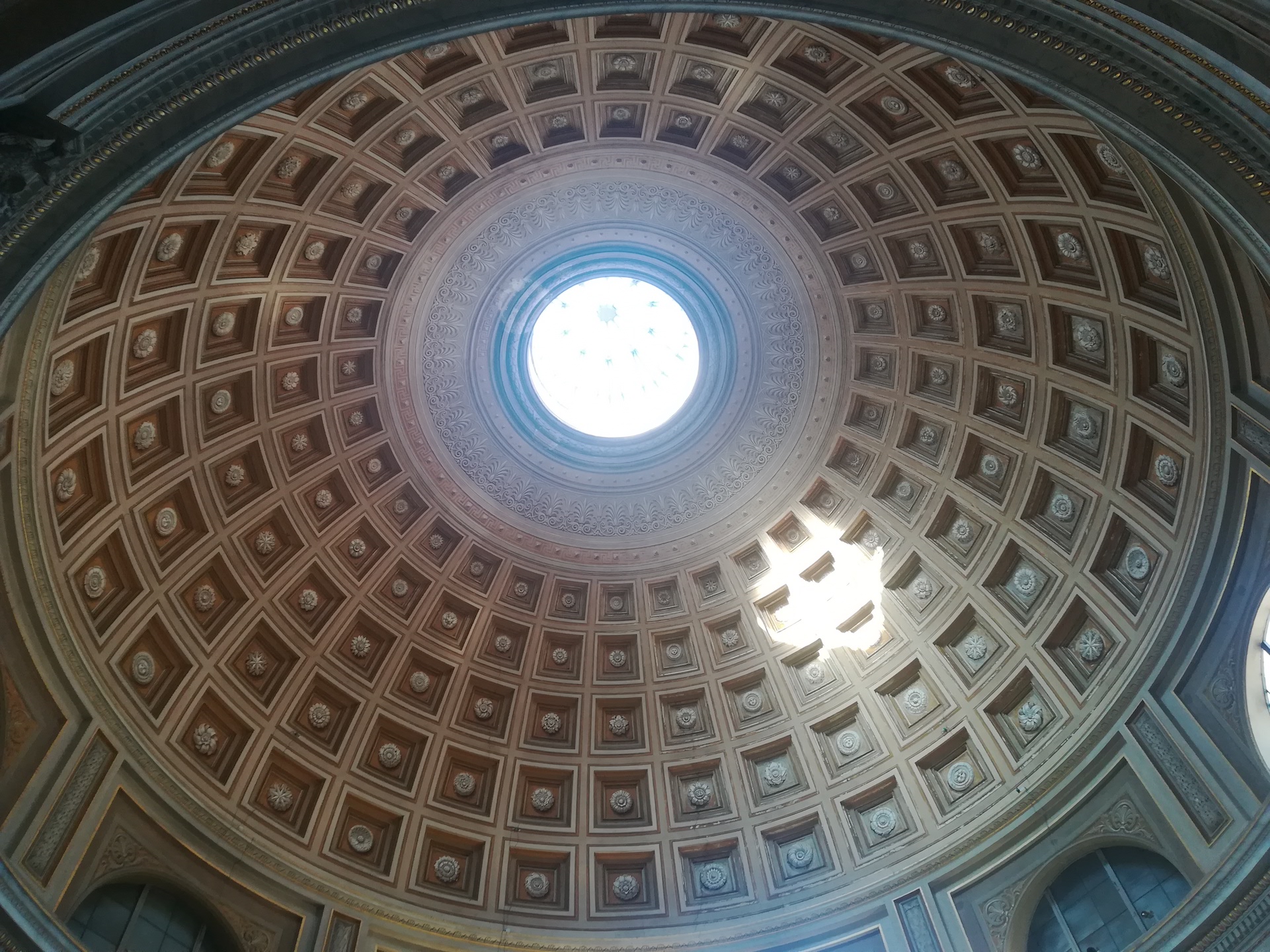
A short distance away – a little over five minutes walk – is the Pantheon. What was previously a temple, and now a church is a real feat of engineering. As someone who has an admiration for well planned, well thought out design in buildings, as well as being able to do things for the sake of doing them – this really does stand out. The diameter of the oculus (the roof bit) is the same as the height of it. That’s… brilliant. The fact that it moderates its own temperature through the design is amazing. The building is free to enter and can get a little busy. It houses the remains of the great artist Raphael. As a result, it does receive a lot of attention from visitors for this purpose. It also contains the tombs of a couple of the previous Kings and Queens of Italy.
Outside the Pantheon is Piazza della Rotunda, which has a fountain in the middle. The area is a popular meeting place but also popular with pickpockets. This seems to be common around many of the tourist attractions such as the Trefi Fountain, Pantheon and so on where people are preoccupied with taking photos of the landmarks.
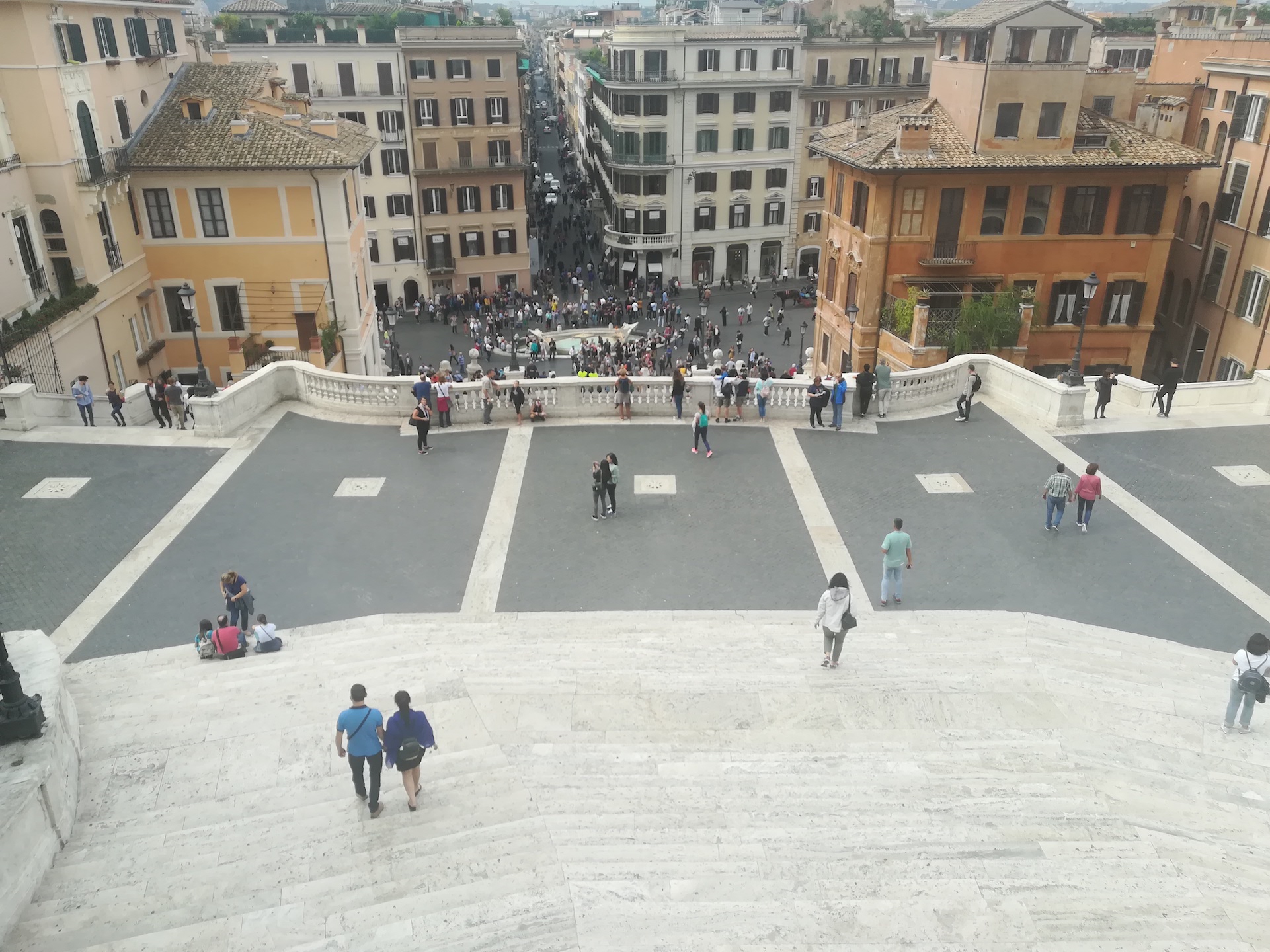
Around 10-15 minutes walk from the Pantheon are the Spanish Steps. The steps link Piazza di Spagna – at the base of the steps – with the Trinita del Monti church at the top. In between are well kept garden terraces which can be overlooked from the top of the stairs. You’re also afforded a good view over the immediate area, too. Nearby, there is a museum dedicated to the works of English poet John Keats which is well worth an hour or so looking round.
As with other attractions, the Steps can become somewhat busy – more so at the top and bottom. The photo here is taken from the top and shows that people tend to congregate at either side, but not so much in the middle. If you’re wanting to sit for a while, it wasn’t too difficult to find space to do so.
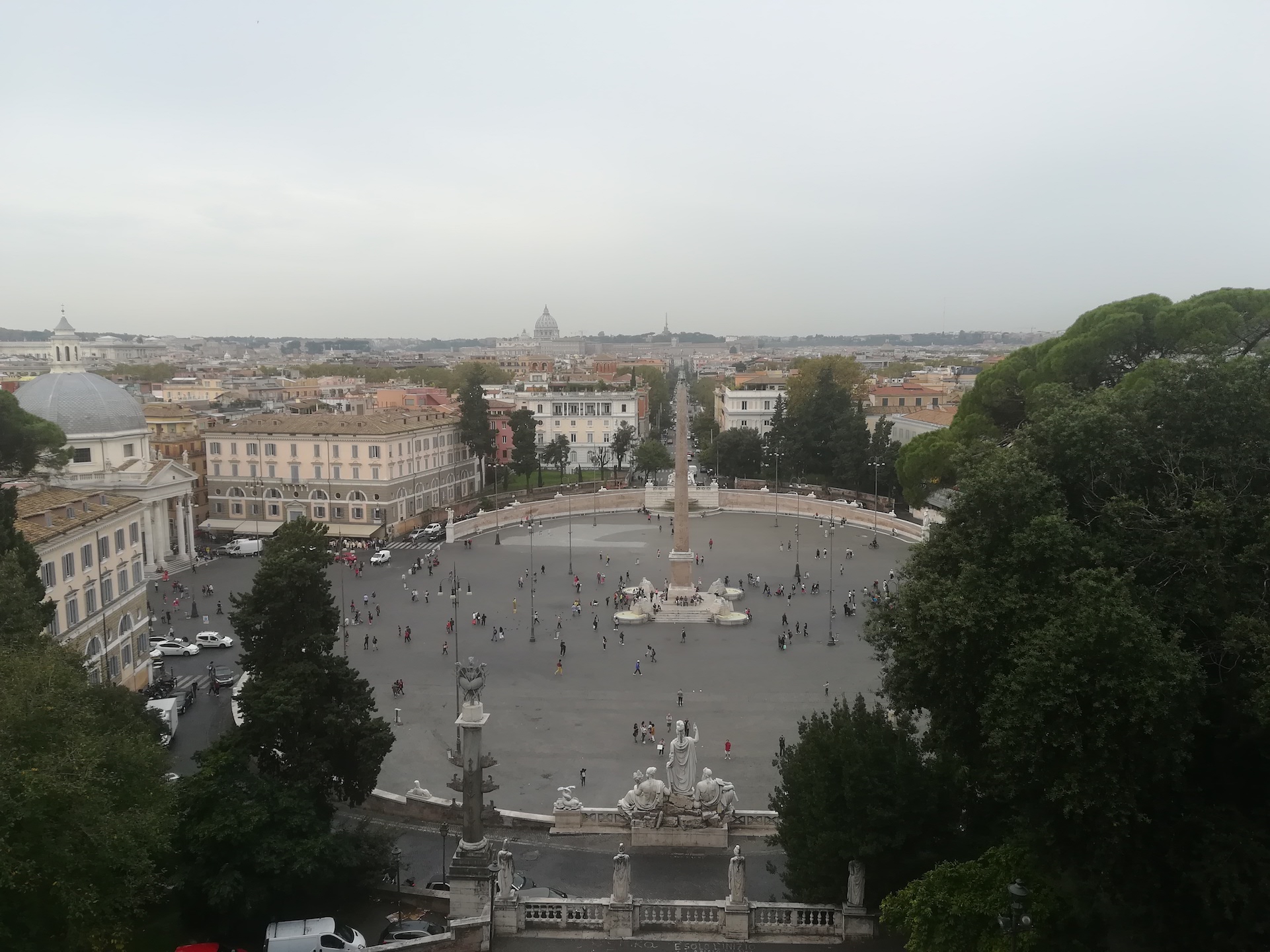
Another important place to visit is Piazza del Popolo, or People’s Square. Again, this is around 10 minutes walk from the Spanish Steps – either the top or the bottom. If you’re following this route, your approach into the Piazza will be flanked by two churches. It’s important not to miss these as they’re truly spectacular in their grandeur.
The centre of the Piazza hosts a large Egyptian obelisk, one of the tallest in Rome. Gathered around were various street performers, although thankfully not the levitating Yoda and similar which have become a scourge on many capital cities recently. Instead, there were mime artists and also those creating large bubbles to the delight of children. One of the more grisly historical details of the square is that it was previously the site for public executions in Rome, the last being performed less than 100 years ago. One end of the Piazza is home to the Pincian Hill – the photo above was taken from here. You’re afforded some amazing views over the Piazza and well beyond from here. It’s worth taking the time to walk the steps up through the trees for this.
The Piazza is the meeting point of a number of roads, including Via del Corso which is popular as hosting many upmarket brands and shops. Not my cup of tea, but still well worth a look. Also on Via del Corso are some of the well regarded Gelaterias. I’m a sucker for Italian ice cream so had to indulge in a couple.
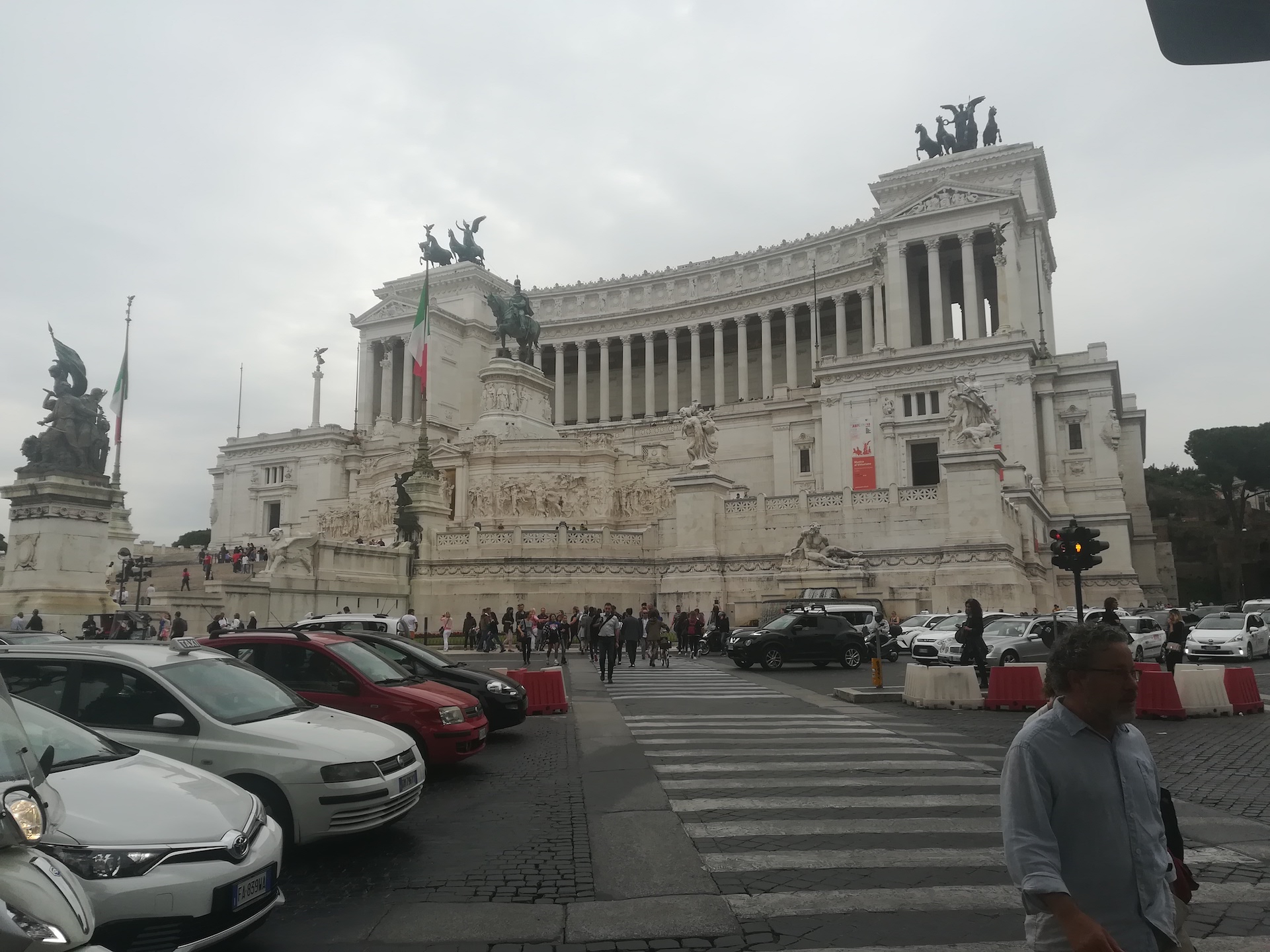
Next up was the Altare della Patria. If you keep walking from the end of Via del Corso then you’ll eventually see it in front of you. It’s… hard to miss! For Italians, this is one of the most iconic, important buildings. Whilst there I witnessed a couple of tourists attempting to unfurl their own flag to take photos with, which was promptly stopped by the guards sited around the building. The tomb of Italy’s unknown soldier can be found here, as well as a large statue to Emmanuel Victor II, the first king of the unified Italy – or, Italy as we know it now. The building is used for many important national celebrations, so if you’re visiting during a national holiday (Republic Day, Armed Forces Day, etc) it’s possible that it’ll be pretty busy here.
The building is within the shadow of the Colosseum, so if you’re looking to visit that you can easily get from one to the other within a few minutes.
Flight details: I flew from Manchester to Rome Ciampino with Ryanair on 09/10/2018, returning on 12/10/2018. Flight cost was £47.30.
Accommodation details: In San Marino, I stayed at the San Marino Hostel for one night. I then stayed at the Rome Hello Hostel for the remaining two nights.
